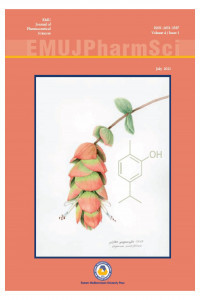Forced degradation studies of new formulation containing naltrexone
Forced degradation studies of new formulation containing naltrexone
Forced Degradation Low Dose Naltrexone, Naltrexone,
___
- Alsante M, Ando A, Brown R, Ensing J, Hatajik TD, Kong W, Tsuda Y (2007). The role of degradant profiling in active pharmaceutical ingredients and drug products. Adv Drug Deliv Rev 59(1): 29-37.
- Brown SA, D’Amico EJ, McCarthy DM, Tapert SF (2001). Four year outcomes from adolescent alcohol and drug treatment. J Stud Alcohol 62: 381–388.
- Klick S, Muijselaar PG, Waterval JCM, Eichinger T, Korn C, Gerding KT, Debets AJ, Griend CS, Beld C, Somsen GW, De Jong GJ (2005). Toward a generic approach for : Stress testing of drug substances and drug products. Pharm Technol 29(2): 48-66.
- Lee JD, Friedmann PD, Kinlock TW, Nunes EV, Boney TY, Hoskinson RA, Wilson D, McDonald R, Rotrosen J, Gourevitch MN, Gordon M, Fishman M, Chen DT, Bonnie RJ, Cornish JW, Murphy SM, O’Brien CP (2016). Extended-Release Naltrexone to Prevent Opioid Relapse in Criminal Justice Offenders. N Engl J Med 374(13): 1232–1242.
- Modesto-Lowe V, Van Kirk J (2002). Clinical uses of naltrexone: A review of the evidence. Exp Clin Psychopharmacol 10(3): 213-227.
- Volkow ND, Li TK (2004). Drug addiction: the neurobiology of behaviour gone awry. Nat Rev Neurosci 5(12): 963-970.
- ISSN: 2651-3587
- Başlangıç: 2018
- Yayıncı: Doğu Akdeniz Üniversitesi
Plant biodiversity and unique yew stands of Istranca (Yıldız) mountains in European Turkey
Mehtap OZTEKİN, F. Neriman ÖZHATAY
Healthy life-style patterns of pharmacists in Turkey
The metabolites of ellagitannin metabolism urolithins display various biological activities
Jale YUZUGULEN, Bahareh NOSHADİ, Karar SHUKUR, Mustafa Fethi SAHİN, Hayrettin Ozan GULCAN
Oleuropein amounts of olive leaves from different regions of Northern Cyprus
Forced degradation studies of new formulation containing naltrexone
